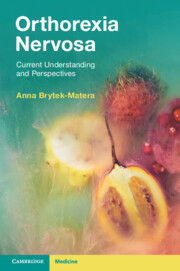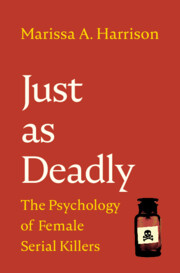Refine search
Actions for selected content:
37 results
5 - Disfigurement Equality at Work
-
- Book:
- Appearance, Disability and the Law
- Published online:
- 31 July 2025
- Print publication:
- 14 August 2025, pp 63-76
-
- Chapter
- Export citation
Chapter 4 - Humanities and Social Sciences in the early childhood and primary years
- from Part I - Humanities and Social Sciences curriculum
-
-
- Book:
- Making Humanities and Social Sciences Come Alive
- Published online:
- 02 August 2025
- Print publication:
- 14 August 2025, pp 57-72
-
- Chapter
- Export citation
Chapter 3 - The Arts and cross-curriculum priorities
- from Part 1 - Why: the arts in education and society
-
- Book:
- Teaching the Arts
- Published online:
- 28 July 2025
- Print publication:
- 06 August 2025, pp 64-100
-
- Chapter
- Export citation
Parents’ Insights on Post-Transition Support for Students on the Autism Spectrum in Secondary Schools
-
- Journal:
- Australasian Journal of Special and Inclusive Education / Volume 49 / Issue 2 / December 2025
- Published online by Cambridge University Press:
- 10 July 2025, pp. 111-125
-
- Article
-
- You have access
- Open access
- HTML
- Export citation
2 - Perspectives on quality
-
- Book:
- Intentional Practice with Infants and Toddlers
- Published online:
- 17 June 2025
- Print publication:
- 12 June 2025, pp 44-63
-
- Chapter
- Export citation
Introduction
-
-
- Book:
- The Making of an International Investment Facilitation Framework
- Published online:
- 13 March 2025
- Print publication:
- 20 March 2025, pp 1-12
-
- Chapter
-
- You have access
- Open access
- HTML
- Export citation

Orthorexia Nervosa
- Current Understanding and Perspectives
-
- Published online:
- 30 October 2024
- Print publication:
- 07 November 2024
‘The Work That Reconnects’: a groupwork methodology for enhancing adaptive responses to the climate and ecological crisis
- Part of
-
- Journal:
- The Cognitive Behaviour Therapist / Volume 17 / 2024
- Published online by Cambridge University Press:
- 30 October 2024, e30
-
- Article
- Export citation
Exploring frailty perspectives of older people and professionals: a systematic integrative review
-
- Journal:
- Ageing & Society / Volume 45 / Issue 9 / September 2025
- Published online by Cambridge University Press:
- 01 October 2024, pp. 1892-1924
- Print publication:
- September 2025
-
- Article
-
- You have access
- Open access
- HTML
- Export citation
Waste not, want not: Value chain stakeholder attitudes to surplus dairy calf management in Australia
-
- Journal:
- Animal Welfare / Volume 33 / 2024
- Published online by Cambridge University Press:
- 22 February 2024, e10
-
- Article
-
- You have access
- Open access
- HTML
- Export citation
Chapter 4 - Group Decision Making
- from Part I - Cognition
-
- Book:
- Encouraging Innovation
- Published online:
- 17 August 2023
- Print publication:
- 31 August 2023, pp 41-51
-
- Chapter
- Export citation
Chapter 8 - Teaching Creativity
- from Part II - Education
-
- Book:
- Encouraging Innovation
- Published online:
- 17 August 2023
- Print publication:
- 31 August 2023, pp 93-102
-
- Chapter
- Export citation
Introduction
-
- Book:
- How Plato Writes
- Published online:
- 27 July 2023
- Print publication:
- 17 August 2023, pp 1-12
-
- Chapter
- Export citation
2 - Mapping the Challenges of ISDS Reform
- from Part I - International Investment Regulation
-
- Book:
- The European Union and International Investment Law Reform
- Published online:
- 13 July 2023
- Print publication:
- 27 July 2023, pp 54-73
-
- Chapter
- Export citation
Perspectives of psychiatric trainees and examiners on the assessment of communication skills during an online clinical examination: a qualitative study
-
- Journal:
- Irish Journal of Psychological Medicine / Volume 41 / Issue 4 / December 2024
- Published online by Cambridge University Press:
- 15 June 2023, pp. 478-484
- Print publication:
- December 2024
-
- Article
- Export citation
Chapter 5 - Comprehension of Pictures
-
- Book:
- Multimedia Comprehension
- Published online:
- 16 February 2023
- Print publication:
- 23 February 2023, pp 87-122
-
- Chapter
- Export citation
8 - History: Exploring Pluriliteracies through a Deeper Learning Episode on the German Empire
- from Part II - Deeper Learning Episodes: First Steps towards Transforming Classrooms
-
-
- Book:
- A Deeper Learning Companion for CLIL
- Published online:
- 04 February 2023
- Print publication:
- 23 February 2023, pp 125-149
-
- Chapter
- Export citation
Chapter 9 - The Behavioral Neuroscience of Serial Murder
-
- Book:
- Just as Deadly
- Published online:
- 06 January 2023
- Print publication:
- 09 February 2023, pp 147-174
-
- Chapter
- Export citation

Just as Deadly
- The Psychology of Female Serial Killers
-
- Published online:
- 06 January 2023
- Print publication:
- 09 February 2023
New Criminological Perspectives: The Observational Method
-
- Journal:
- International Annals of Criminology / Volume 60 / Issue 2 / July 2022
- Published online by Cambridge University Press:
- 30 August 2022, pp. 141-161
- Print publication:
- July 2022
-
- Article
- Export citation
